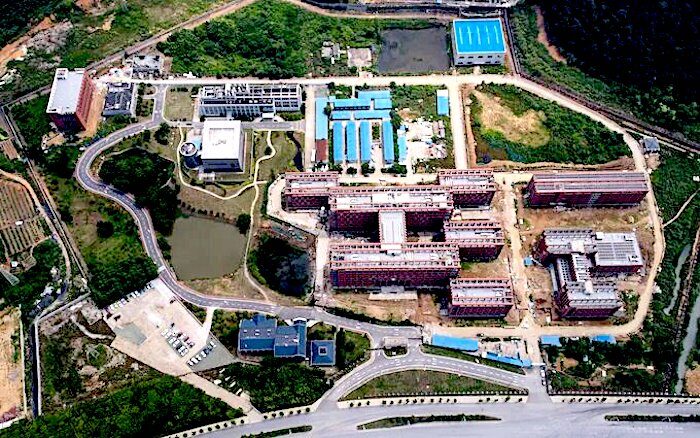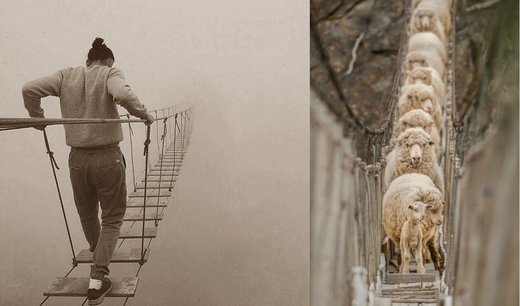Dokumenter fra en ansøgning om tilskud indsendt til US Defense Advanced Research Projects Agency (Darpa), lækket i sidste måned, afslører, at det internationale team af forskere planlagde at blande genetiske data fra nært beslægtede stammer og dyrke helt nye vira.
En genetikekspert, der arbejder med Verdenssundhedsorganisationen (WHO), som afslørede planen efter at have studeret forslagene i detaljer, sagde, at hvis Sars-CoV-2 var blevet produceret på denne måde, ville det forklare, hvorfor der aldrig er fundet et tæt match I naturen.
Indtil videre er den nærmeste naturligt forekommende virus til Sars-CoV-2 en stamme kaldet Banal-52, som blev rapporteret fra Laos i sidste måned og deler 96,8 procent af genomet. Alligevel forventer forskere, at en direkte forfader til at ville have en omkring 99,98 procent match - og ingen er blevet fundet hidtil.
Kommentar: Delvist oversat af Sott.net fra Wuhan and US scientists planned to create new coronaviruses
The Darpa proposals, leaked to the pandemic origins analysis group Drastic, show the team had planned to take sequences from naturally occurring coronaviruses and use them to create a brand new sequence that was an average of all the strains.
The grant application, submitted in 2018, states:
"We will compile sequence/RNAseq data from a panel of closely related strains and compare full length genomes, scanning for unique SNPs representing sequencing errors.Explaining the proposal, a WHO collaborator, who has asked not to be named for fear of reprisals, said:
"Consensus candidate genomes will be synthesised commercially using established techniques and genome-length RNA and electroporation to recover recombinant viruses."
"This means that they would take various sequences from similar coronaviruses and create a new sequence that is essentially the average of them. It would be a new virus sequence, not a 100 per cent match to anything.The source said it was noteworthy that the cut-off for generating such an average sequence was viruses that only had five per cent genetic divergence from each other.
"They would then synthesise the viral genome from the computer sequence, thus creating a virus genome that did not exist in nature but looks natural as it is the average of natural viruses.
"Then they put that RNA in a cell and recover the virus from it. This creates a virus that has never existed in nature, with a new 'backbone' that didn't exist in nature but is very, very similar as it's the average of natural backbones."
Last year, scientists at the Wuhan Institute of Virology said they had found a strain named RaTG13 in bat droppings in a cave in Yunnan province in 2013 which was a 96.1 per cent match to Sars-CoV-2. It means RaTG13 could have been included in a set of viral genomes to help create an average sequence.
Although the grant proposal was rejected in 2018, the Wuhan database of viral strains was taken offline prior to the Covid outbreak some 18 months later, meaning it is impossible to check which viruses the team was working on or had created. Wuhan scientists have consistently denied creating Sars-CoV-2 in a lab.
The WHO source added:
"If Sars-CoV-2 comes from an artificial consensus sequence composed of genomes with more than 95 per cent similarity to each other... I would predict that we will never find a really good match in nature and just a bunch of close matches across parts of the sequence, which so far is what we are seeing.
"The problem is that those opposed to a lab leak scenario will always just say that we need to sample more, and absence of evidence isn't evidence of absence. Scientists overall are afraid of discussing the issue of the origins due to the political situation. This leaves a small and vocal minority of biased scientists free to spread misinformation."
The proposal was submitted by the British zoologist Peter Daszak on behalf of a consortium which included Daszak EcoHealth Alliance, the Wuhan Institute of Virology, the University of North Carolina and Duke NUS in Singapore.
The plans are in addition to other proposals made in the Darpa documents, including inserting a section into existing viruses to make them more infectious to humans and inoculating wild bats with aerosolised engineered spike proteins from viruses.
Experts said if the ultimate aim of the proposal was to create a pan-coronavirus vaccine, constructing an "ideal" average virus would have been a good starting point.
Mr Daszak, currently a member of the WHO team investigating the pandemic's origins, was also behind a letter published in The Lancet which dismissed suggestions that Covid did not have a natural origin as a conspiracy theory.
The WHO source said he had struggled to raise the issue of a lab leak with other scientists and had been warned not to go on the record with his concerns.
The proposal team has been approached for comment but had not responded at the time of publication.




Læserkommentarer
dig vores Nyhedsbrev